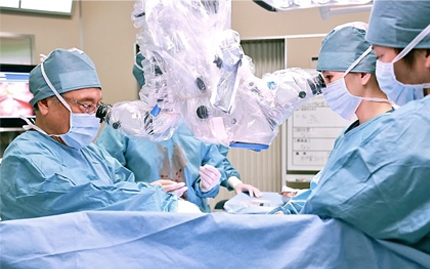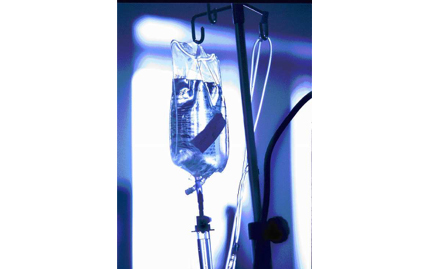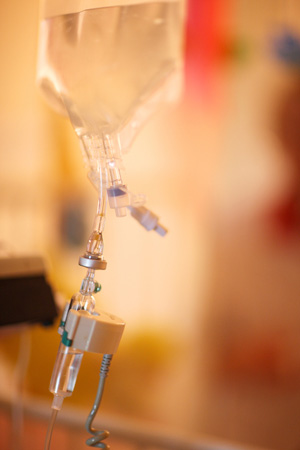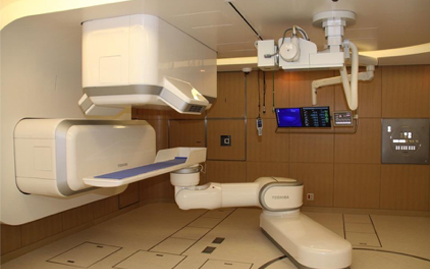At present, the three major treatments for cancer are Operative Treatment, Radiotherapy and Chemotherapy (anticarcinogen).
Current status of cancer treatments

~Operative Treatment~
As a very common treatment, operative treatment refers to the process of removing cancer via operations, especially primary cancer. Considering the fact that cancer cells could spread to nearby lymph nodes, part of the lymph nodes is cut off. Such a treatment can result in rapid expansion of displaced focus and lowering of immunity because of damage to the immune system.
~Radiotherapy~
Via radiation, radiotherapy is a non-operative treatment method that puts less burden upon patients and as the treatment equipment and technology is advancing, enabled to precisely locate the target area so as to minimize the side-effect exerted to the normal tissues in close proximity. Such a treatment is effective for curing osteocarcinoma.


~Chemotherapy (anticarcinogen)~
By using chemicals to exterminate cancer cells, chemotherapy (anticarcinogen) can be jointly employed with operative treatment and radiotherapy to handle the conditions of cancer recurrence and systematic metastasis in connection with, for example, leukemia or malignant lymphoma while inflicted anguish upon patients and led to lowering of immunity as healthy cells have also been wiped out simultaneously. Additionally, anticarcinogens would become useless the moment an antibody surfaces in the process of treatment.
Cancer treatments in the new era

~Immunocyte therapy~
Successfully drawn great attention, anti-PD-1 antibodies are utilized in an American therapeutic experiment that adopted solid tumors like non-small-cell lung cancer, prostate cancer, colorectal cancer and renal cell carcinoma as well as malignant melanoma as experimental subjects, and subsequently have been proved effective.
The efficiency ratio related to melanoma or renal cell carcinoma in the experiment approaches almost 30% (refers to the proportion that is made up of patients whose cancer cells disappear or shrink to a certain degree).
In 2012, the New England Journal of Medicine, the most popular clinical medicine magazine, reported the experimental results and commented below: It is the most effective anti-cancer drug adopted by cancer immunotherapy over 30 years in the past. Following treatment, some patients experienced no recurrence for at least one year.
Comparing with previous anti-cancer drugs, it features the following characteristics: 1. No limitation in regard of cancer type; 2. With small side-effect; 3. Even facing advanced cancer, able to remain effective once started to take effect and can be injected over and over again. Distinguished from other counterparts that accurately aim at proliferation of specific cancer cells and hinder target molecules from growing, the immunotherapeutic anti-cancer drugs are capable of dealing with various types of cancer cells and are expected by numerous people that PD-1 anti-cancer drugs might replace all kinds of currently-used anti-cancer drugs.
~Particle ray therapy~
Composed of energetic particles, particle rays form one category of radioactive rays. Particle rays that consist of a nucleus that is heavier than that of proton rays are called Heavy Particle Rays or Heavy Ion Rays. The difference between proton rays and other particle rays is derived from biological effect variation that primarily lies in the fact that cell-killing power changes given the same radiological dose. Speaking of biological effects, proton rays are almost identical with X-ray or electron beams and meanwhile, carbon ion rays are 2~3 times the former and then put into the group of heavy particle rays.
In America, proton rays (hydrogen atom ion) dominate the cancer treatment field and have obtained preferred treatment results.
Japan is equipped with the most medical equipment around the world, especially in the aspect of heavy particle treatment. Either from the perspective of patient quantity or treatment achievements, Japan owns the most advanced medical equipment throughout the globe, which seems quite reasonable.


~Medicines of immunocyte therapy~
Successfully drawn great attention, anti-PD-1 antibodies are utilized in an American therapeutic experiment that adopted solid tumors like non-small-cell lung cancer, prostate cancer, colorectal cancer and renal cell carcinoma as well as malignant melanoma as experimental subjects, and subsequently have been proved effective.
The efficiency ratio related to melanoma or renal cell carcinoma in the experiment approaches almost 30% (refers to the proportion that is made up of patients whose cancer cells disappear or shrink to a certain degree).
In 2012, the New England Journal of Medicine, the most popular clinical medicine magazine, reported the experimental results and commented below: It is the most effective anti-cancer drug adopted by cancer immunotherapy over 30 years in the past. Following treatment, some patients experienced no recurrence for at least one year.
Comparing with previous anti-cancer drugs, it features the following characteristics: 1. No limitation in regard of cancer type; 2. With small side-effect; 3. Even facing advanced cancer, able to remain effective once started to take effect and can be injected over and over again. Distinguished from other counterparts that accurately aim at proliferation of specific cancer cells and hinder target molecules from growing, the immunotherapeutic anti-cancer drugs are capable of dealing with various types of cancer cells and are expected by numerous people that PD-1 anti-cancer drugs might replace all kinds of currently-used anti-cancer drugs.
